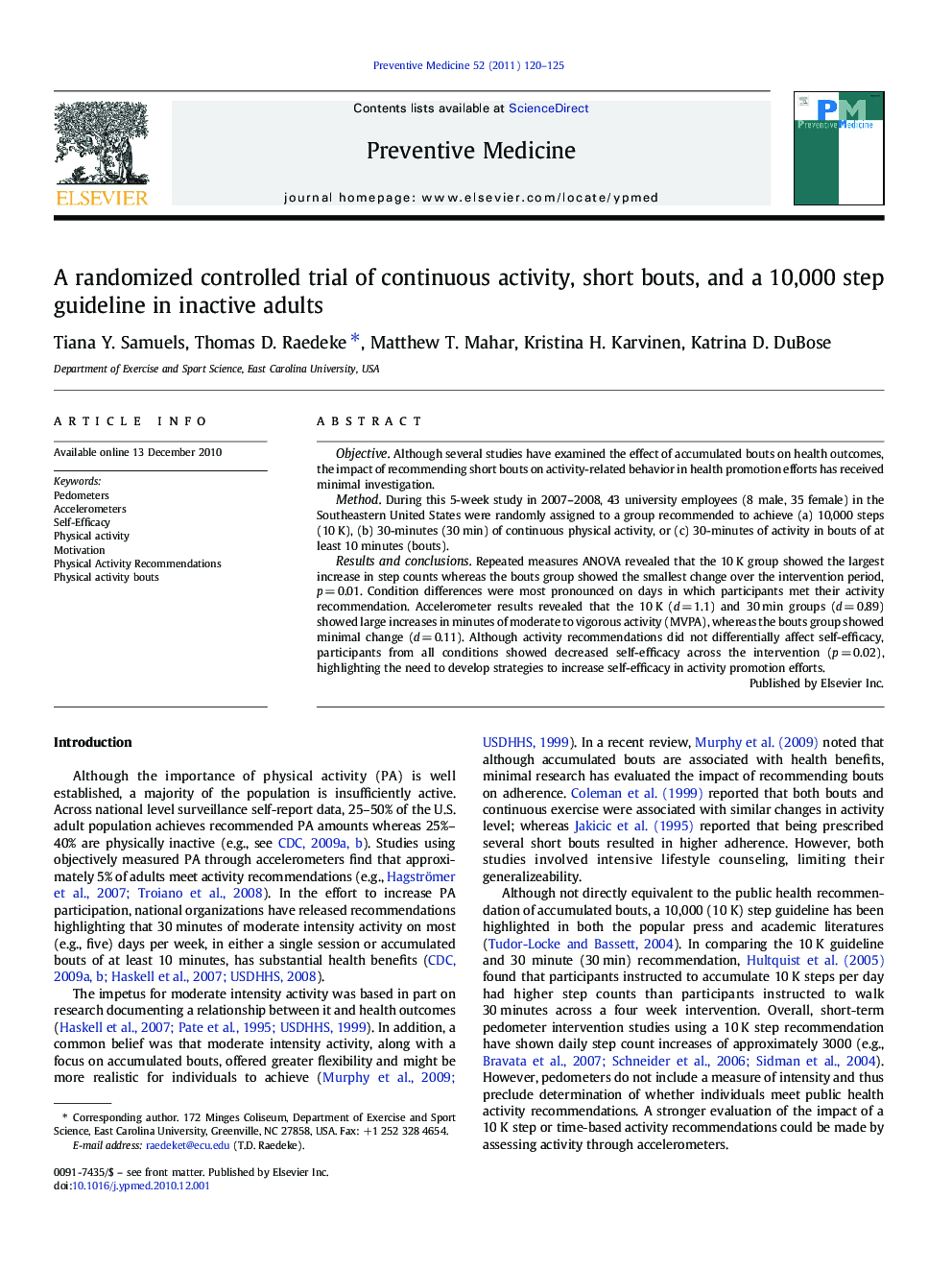| Article ID | Journal | Published Year | Pages | File Type |
|---|---|---|---|---|
| 6048375 | Preventive Medicine | 2011 | 6 Pages |
Abstract
Repeated measures ANOVA revealed that the 10 K group showed the largest increase in step counts whereas the bouts group showed the smallest change over the intervention period, p = 0.01. Condition differences were most pronounced on days in which participants met their activity recommendation. Accelerometer results revealed that the 10 K (d = 1.1) and 30 min groups (d = 0.89) showed large increases in minutes of moderate to vigorous activity (MVPA), whereas the bouts group showed minimal change (d = 0.11). Although activity recommendations did not differentially affect self-efficacy, participants from all conditions showed decreased self-efficacy across the intervention (p = 0.02), highlighting the need to develop strategies to increase self-efficacy in activity promotion efforts.
Keywords
Related Topics
Health Sciences
Medicine and Dentistry
Complementary and Alternative Medicine
Authors
Tiana Y. Samuels, Thomas D. Raedeke, Matthew T. Mahar, Kristina H. Karvinen, Katrina D. DuBose,
